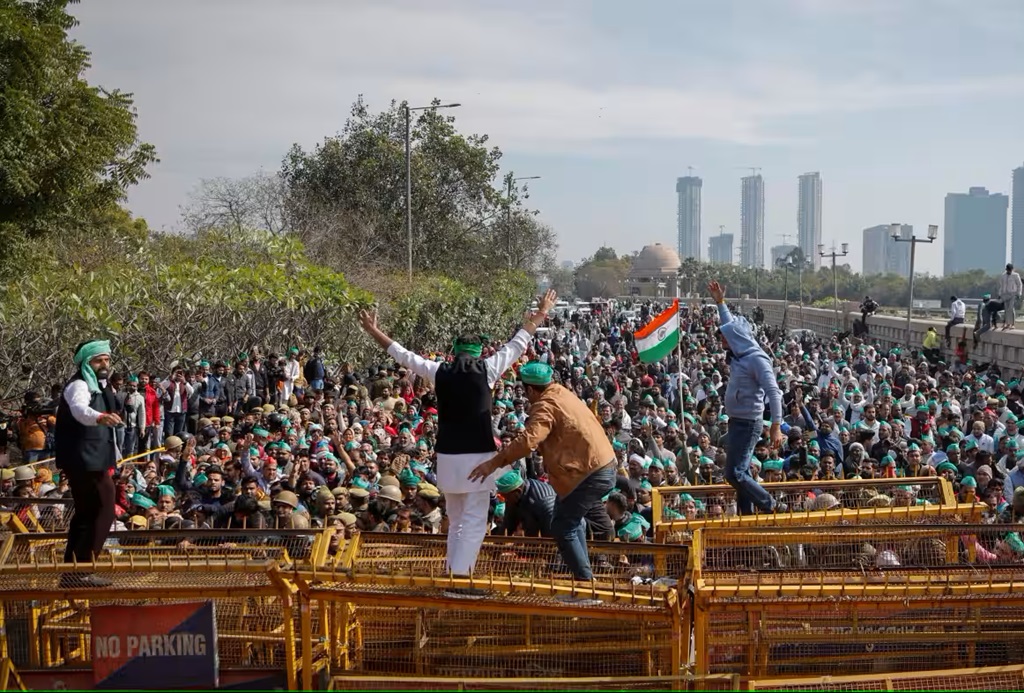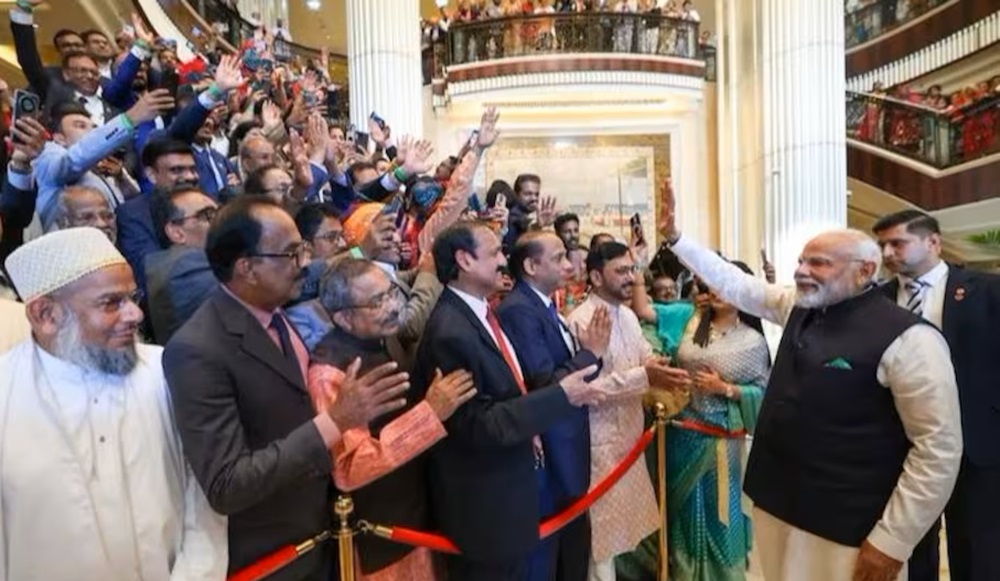Police in India had blocked roadways to deter farmers from moving to New Delhi to demand higher crop prices promised by Prime Minister Narendra Modi in 2021 when hundreds of growers camped on major highways leading to the country’s capital.
Some government ministers are set to meet with farm union leaders on Monday to avert a repetition of the year-long protest, which sought to force the government to scrap farm policies designed to de-regulate massive agricultural markets.
The march comes only months before India’s national elections when Prime Minister Narendra Modi is generally anticipated to win a third term. India’s millions of farmers comprise a crucial voting bloc, and ruling parties work hard to keep them on their side.
Television footage showed farmers in tractors moving into Delhi from the northern Indian breadbasket states of Punjab and Haryana, with barricades such as barbed wire fencing and cement blocks erected on the city’s outskirts to stop them. The police also issued orders preventing public gatherings in Delhi.
Farmers have responded to a request from union officials to seek more support or guaranteed prices for their produce and to force the government to deliver its commitment to quadruple farmers’ incomes.
“We will move peacefully, and our goal is for the government to listen to our demands,” Sarvan Singh Pandher, general secretary of the Punjab Kisan Mazdoor Sangharsh Committee, told news agency ANI.
Every year, the government publishes support prices for more than 20 crops to serve as a benchmark, but state agencies only purchase rice and wheat at the support level, benefiting just around 6% of farmers who grow those two commodities.
When Modi’s administration removed farm regulations in 2021 in response to farmer protests, the government stated that it would form a council of growers and government officials to examine ways to secure support prices for all farm commodities.
Farmers in India accuse the Modi government of violating that pledge.
Meanwhile, Indian Prime Minister Narendra Modi arrived in the United Arab Emirates on Tuesday for his eighth visit, greeted by tens of thousands of his countrymen ahead of upcoming elections.
Emirati President Sheikh Mohammed bin Zayed Al Nahyan greeted Modi upon his arrival in Abu Dhabi, a man he has repeatedly referred to as his brother while striving to strengthen ties between the Arabian Peninsula nation and India.
The two leaders passed an honour guard before sitting down for their discussion, which resulted in bilateral agreements between the two countries.
Modi appreciated “our closeness and how we have moved forward in every field.” He said, “Brother, it is also a cause of satisfaction that we will sign a bilateral investment treaty. This will also have a long-term influence.
The two parties also discussed energy challenges. India continues to be a major consumer of Emirati oil and is now considering long-term contracts for liquefied natural gas, according to a statement from the Indian embassy.
“The UAE and India are united by our shared desire to advance the bilateral strategic partnership and create a better future for our peoples,” Sheikh Mohammed wrote on X, formerly Twitter.
On Tuesday night, tens of thousands of Indians packed Zayed Sports City Stadium to witness Modi. The event in Abu Dhabi was only open to Indian nationals, according to organisers.
“You have created a new history in Abu Dhabi,” he stated. “You have come from all corners of UAE, and different states of India, but the hearts of everyone are connected.”
Modi’s arrival coincided with the use of tear gas by Indian police on Tuesday, who detained some farmers who clashed with them and attempted to break through barricades, preventing them from reaching New Delhi to demand guaranteed crop prices.
Farmers camped in the Indian capital for months in 2021 after Modi reversed unpopular agriculture rules that had sparked previous protests.
The protests could pose a huge threat to Modi and his ruling Bharatiya Janata Party ahead of the upcoming elections in India, the world’s largest democracy. Modi is, nevertheless, generally predicted to win a third term.
Of the roughly 9 million individuals in the UAE, India believes that more than 3.5 million are Indian expats, making them the country’s largest national group, outnumbering Emirati natives.
While many are low-wage labourers, there is an increasing number of white-collar professionals and multigenerational Indian families.
Modi’s visit emphasises the countries’ long-standing economic and historical links, which range from spice trading and gold smuggling in the UAE’s early years to tens of billions of dollars in yearly bilateral commerce today.
In 2022, the countries inked a free trade agreement to triple bilateral commerce to $100 billion. The governments have agreed to allow India to settle certain payments in rupees rather than dollars, decreasing transaction costs.
The partnership also highlights the Emiratis’ realpolitik foreign strategy. The UAE has supported Modi, while Hindu nationalist parties in India intensify their attacks on Muslims.
Modi got the Emirates’ highest civilian honour in 2019 despite stripping Kashmir of its statehood. His initial visit to the UAE in 2015 was the first by an Indian prime minister in 34 years.
On Wednesday, Modi will address the World Government Summit in Dubai and unveil a new stone-carved Hindu temple near Abu Dhabi. He will then head to Qatar.
India to Build 1,200 Kilometer Border Wall on Myanmar Border
India to Build 1,200 Kilometer Border Wall on Myanmar Border









